1940-1990
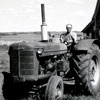 Between 1946 and 1951 13,500 Estonian refugees arrived in Canada. Of this number, only 400 came to Alberta. This accounts for roughly 2.9 percent of the Estonian immigrant population, indeed a significantly disproportionate statistic. As mentioned previously, the larger urban centres were more attractive to Estonian immigrants relative to prairie settlements. Moreover, the Canadian Government preferred single, unskilled immigrants suitable for manual labour and other vacancies. As a result, families wanting to immigrate required sponsorship from a Canadian family. Alberta's Estonian community graciously sponsored some Estonian families, as did the Lutheran Church of Canada. By the post-World War II period, Estonian immigrants were generally well educated. They had acquired over the years a wealth of tangible work experience, complemented by an assortment of professional degrees and diplomas. Unfortunately, Estonian teachers, doctors and lawyers, among other professionals, could only claim refugee status if they were to work as farmhands. Most of these professionals did not have prior farmhand experience and were unfit to contribute to Alberta's agricultural economy. Others simply detested the work. After serving their one-year contract, many sought more suitable employment opportunities in the urban environment. Much of the work available in Alberta's larger centres was blue-collar employment, an obvious disappointment for educated and experienced Estonian professionals. Nonetheless, they accepted the challenge and worked hard to become established in their new communities.
Between 1946 and 1951 13,500 Estonian refugees arrived in Canada. Of this number, only 400 came to Alberta. This accounts for roughly 2.9 percent of the Estonian immigrant population, indeed a significantly disproportionate statistic. As mentioned previously, the larger urban centres were more attractive to Estonian immigrants relative to prairie settlements. Moreover, the Canadian Government preferred single, unskilled immigrants suitable for manual labour and other vacancies. As a result, families wanting to immigrate required sponsorship from a Canadian family. Alberta's Estonian community graciously sponsored some Estonian families, as did the Lutheran Church of Canada. By the post-World War II period, Estonian immigrants were generally well educated. They had acquired over the years a wealth of tangible work experience, complemented by an assortment of professional degrees and diplomas. Unfortunately, Estonian teachers, doctors and lawyers, among other professionals, could only claim refugee status if they were to work as farmhands. Most of these professionals did not have prior farmhand experience and were unfit to contribute to Alberta's agricultural economy. Others simply detested the work. After serving their one-year contract, many sought more suitable employment opportunities in the urban environment. Much of the work available in Alberta's larger centres was blue-collar employment, an obvious disappointment for educated and experienced Estonian professionals. Nonetheless, they accepted the challenge and worked hard to become established in their new communities.
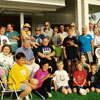 In the post-WWII era, Alberta witnessed an unwavering increase in urbanization. By the late 1940s, Estonian organizations were established in Edmonton and, years later, in Calgary. According to a 1966 survey there were 87 Estonians in Edmonton while Calgary's Estonian population reached upwards of one hundred and twenty. A variety of events and social gatherings were planned in Alberta's two major cities although primary interests centered on celebrating Estonian Independence Day.
In the post-WWII era, Alberta witnessed an unwavering increase in urbanization. By the late 1940s, Estonian organizations were established in Edmonton and, years later, in Calgary. According to a 1966 survey there were 87 Estonians in Edmonton while Calgary's Estonian population reached upwards of one hundred and twenty. A variety of events and social gatherings were planned in Alberta's two major cities although primary interests centered on celebrating Estonian Independence Day.
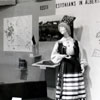 Calgary's Estonian community would often frequent Estonian arts and crafts exhibits at local multicultural events celebrating Calgary's diverse ethnic community. In 1955, Calgary's Estonian community entered a float in the province's Golden Jubilee Parade. Members of the Estonian community, dressed entirely in traditional Estonian garments, waved to the crowds.
Calgary's Estonian community would often frequent Estonian arts and crafts exhibits at local multicultural events celebrating Calgary's diverse ethnic community. In 1955, Calgary's Estonian community entered a float in the province's Golden Jubilee Parade. Members of the Estonian community, dressed entirely in traditional Estonian garments, waved to the crowds.
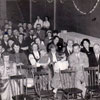 Leaving the city to appreciate Alberta's diverse landscape was another popular activity. Weekend excursions to the Rockies or to other Alberta Provincial and National Parks were frequently scheduled. In Edmonton, organizing sporting events and other such leisure activities was popular among members of the Estonian community. Maintaining close contact with Estonia's Baltic neighbours, Latvia and Lithuania, was important in fostering a Baltic identity in Alberta's capital city.
Leaving the city to appreciate Alberta's diverse landscape was another popular activity. Weekend excursions to the Rockies or to other Alberta Provincial and National Parks were frequently scheduled. In Edmonton, organizing sporting events and other such leisure activities was popular among members of the Estonian community. Maintaining close contact with Estonia's Baltic neighbours, Latvia and Lithuania, was important in fostering a Baltic identity in Alberta's capital city.
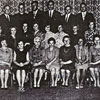 By combining the three ethnic communities, events were much larger, showcasing a diverse agenda. For instance, for a few days in October 1967, Edmonton's Baltic Festival hosted a concert, an exhibition, a gala reception, and a banquet attended by several prominent government representatives.
By combining the three ethnic communities, events were much larger, showcasing a diverse agenda. For instance, for a few days in October 1967, Edmonton's Baltic Festival hosted a concert, an exhibition, a gala reception, and a banquet attended by several prominent government representatives.








